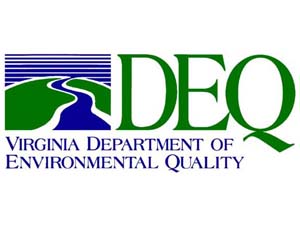By Stefanie Jackson – Northampton County Administrator Charles Kolakowski reported Aug. 27 that the entire Chesapeake Bay could soon become a no-discharge zone under the Clean Water Act, a federal law that aims to reduce pollution in U.S. waters.
That means ships would not be permitted to discharge untreated or treated sewage into the Chesapeake Bay.
It’s one topic up for discussion by the Virginia Department of Environmental Quality, as determined by a study VDEQ did in consultation with Virginia Secretary of Natural Resources Matthew Strickler. His report on the study was released Aug. 19.
Gov. Ralph Northam called for the “environmental justice” study in an executive order he signed last year.
“Environmental justice communities – such as areas with large minority populations, those with lower incomes, and indigenous residents – are on the frontlines of climate and environmental change,” he stated in a VDEQ press release April 16.
“These communities and their residents are often the first affected by the negative consequences of environmental impacts, which make existing health and economic disparities even worse,” Strickler said.
The study “will help ensure the agency’s programs benefit all communities, especially those that have historically been the most burdened by pollution,” Northam said.
In spite of Trump administration proposals to weaken the U.S. Environmental Protection Agency (EPA), “DEQ has the authority under Virginia law to continue using standards that are more protective of the environment and public health,” the report stated.
VDEQ wants to be authorized by state law to enforce reporting of surface water withdrawals and apply penalties for noncompliance. The agency estimates at least 20% of withdrawals are unreported, “undermining water conservation efforts.”
VDEQ wants to expand drought monitoring from its current, “inadequate” 20-well system to a “comprehensive network” of wells for predicting drought and benefiting “localities, farmers, businesses, fish, and wildlife, especially under climate change scenarios.”
VDEQ aims to replace groundwater monitoring wells that are more than 30 years old and expand the groundwater monitoring system to include wells that measure saltwater intrusion in eastern Virginia. Some areas show significant saltwater intrusion, “which will only get worse as sea levels rise,” the report stated.
The agency also wants to improve public engagement in VDEQ’s activities by establishing community outreach coordinators at VDEQ’s six regional offices and providing live streaming of VDEQ’s public meetings and hearings.
VDEQ was formed in 1993. Since 2001, VDEQ’s general fund has been decreased by $37 million per year and 74 jobs have been lost, the study said. Now the agency must financially rely more heavily on permitting fees that have not been increased in years.
Last year, the Northam administration proposed $2.5 million in additional funding for VDEQ, but the General Assembly funded only about one-third of that amount, or $859,075.
“DEQ is doing its best” with limited funding, but further progress toward its goals will not be possible without additional resources, the report stated.
Northampton Supervisor John Coker said he will attend a State Water Control Board meeting, Sept. 6, in Richmond.
He will recommend that Eastern Shore groundwater withdrawals not used for drinking water should be taken from the shallow Columbia aquifer instead of the deeper Yorktown-Eastover aquifer.
For example, large poultry houses known as CAFOs (Concentrated Animal Feeding Operations) should withdraw water from the Columbia aquifer for use in their cooling systems.
The Yorktown aquifer is the Shore’s preferred source of drinking water because it’s deeper and less susceptible to contamination by septic systems, fertilizers, pesticides, and herbicides.
But because the Yorktown is deeper, it also takes longer for rainwater to reach the aquifer to replenish it. The Columbia aquifer recharges at 10 times the rate of the Yorktown.
Due to a lack of rivers or lakes, the Shore’s sole source of fresh water is its aquifers.



